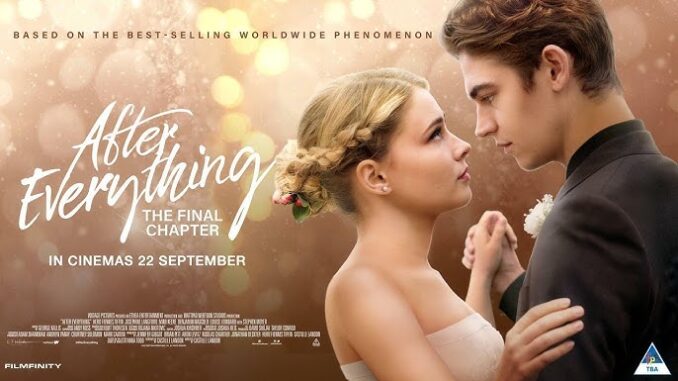
The Unfurling Tapestry: Why “After Everything” Might Not Be the End
The final frame fades, the credits roll, and a palpable sigh collective escapes the fanbase. “After Everything,” the latest cinematic chapter in the tempestuous love story of Tessa Young and Hardin Scott, arrives with the weight of finality. It promises closure, a tying of narrative threads, and perhaps, a whisper of “happily ever after.” Yet, in the vibrant, ever-hungry ecosystem of modern storytelling, endings are often merely intermissions, and a disclosed future of prequel and sequel plans confirms what many ardent followers instinctively knew: the After universe, far from concluding, is merely shifting its gaze, preparing to unfurl new facets of a deeply cherished, if controversial, saga.
The initial allure of Anna Todd’s After series, born from the fervent digital pages of Wattpad, lay in its raw, often uncomfortable depiction of first love, passion, and the tumultuous dance between two broken souls. Hardin, the brooding, damaged literary enthusiast, and Tessa, the innocent, ambitious college girl, became a constellation of conflicting desires and magnetic pull. Their story was not neat; it was messy, volatile, and profoundly human in its imperfection. This very imperfection, the constant push and pull, the cycles of heartbreak and reconciliation, is precisely why a true “end” feels almost antithetical to its spirit. Real relationships don’t conclude with a definitive fade-out; they evolve, they fracture, they mend, they adapt. “After Everything” attempts to cap this relentless journey, to give Hardin and Tessa a hard-won peace. But the very intensity that drew millions to their story left an indelible mark, one that echoes beyond a single concluding narrative.
This is where the revelation of prequel and sequel plans acts not as a cynical commercial maneuver, but as a recognition of the story’s inherent, ongoing life. Imagine delving into the shadowed corridors of Hardin Scott’s past, a prequel that dissects the roots of his trauma, his anger, his profound fear of abandonment. We have glimpsed fragments of his fractured childhood, the alcoholism of his mother, the distant presence of his biological father. A prequel would immerse us in the very tempest-tossed seas of his youth, charting the currents that shaped his volatile personality long before Tessa Young entered his orbit. It would be an exploration of the boy before the man, the genesis of the beautiful darkness that captivated Tessa. This isn’t merely filling in blanks; it’s enriching the original narrative, adding layers of understanding to the very foundation of his character, making his journey with Tessa even more poignant and complex. To understand the fire, one must first comprehend the tinder and the spark.
And if the past beckons, so too does the future. Sequels, extending beyond the quiet resolution of “After Everything,” offer the tantalizing prospect of exploring Hardin and Tessa’s lives in the true aftermath. What does their love look like when the storm has passed, and the daily realities of adulthood, careers, and perhaps parenthood, set in? The “happily ever after” of many romance novels often leaves the substantial, ongoing work of maintaining a relationship unexamined. A sequel could delve into the subtle challenges, the continued personal growth (or backsliding), the raising of their children, and the echoes of their tumultuous beginnings in their present. It could explore how their once all-consuming passion transforms into a mature, resilient love, facing new adversaries that are perhaps less dramatic but no less significant. It’s an opportunity to depict the slow, steady build of a life together, rather than just the dramatic ignition.
Ultimately, the announcement of prequel and sequel plans for the After universe is a testament to the enduring power of its narrative and the fervent murmur of its devoted readership. It acknowledges that some stories, much like life itself, refuse to be neatly concluded. They are ongoing tapestries, rich with threads that beg to be unraveled further back in time, or woven forward into an imagined future. “After Everything” may feel like a punctuation mark, but in the grander scheme of this particular love story, it’s merely a comma, signaling a pause, a breath, before the next compelling sentence begins. The After story is not a destination; it is an ongoing journey, and clearly, the road still stretches ahead.
